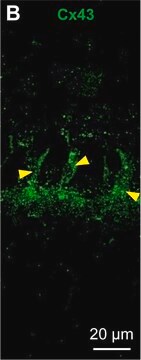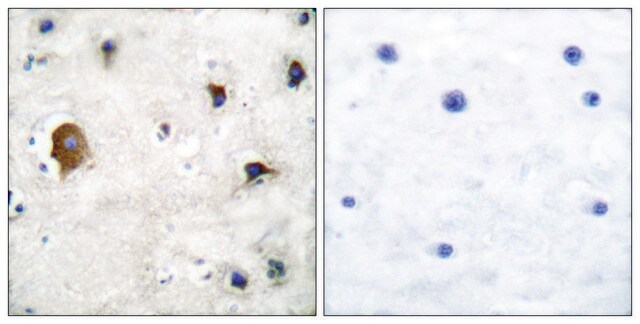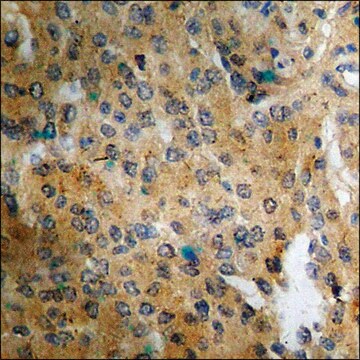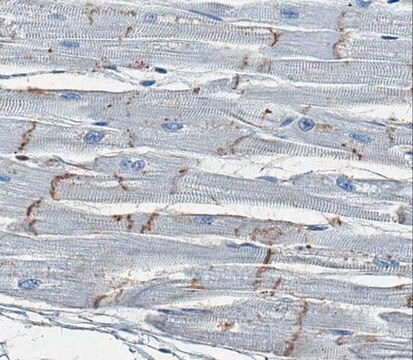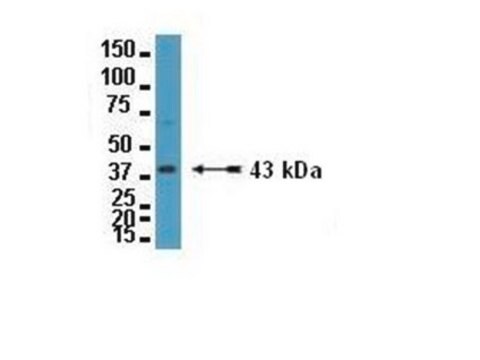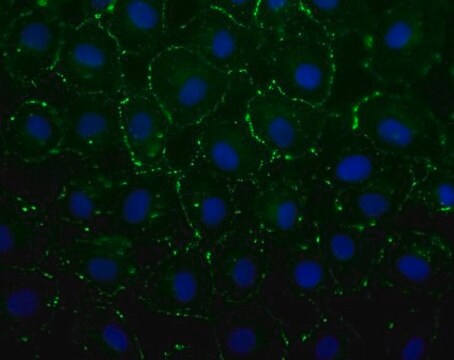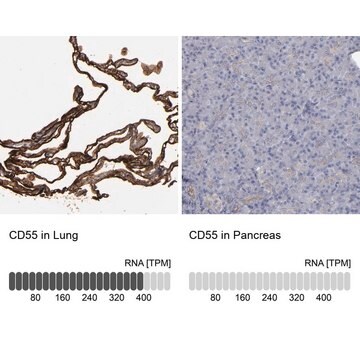AB1728
Anti-Connexin 43 Antibody
CHEMICON®, rabbit polyclonal
Synonim(y):
Gap Junction alpha-1 Protein (CxA-1)
About This Item
Polecane produkty
Nazwa produktu
Anti-Connexin 43 Antibody, CT, cytosolic, Chemicon®, from rabbit
pochodzenie biologiczne
rabbit
Poziom jakości
forma przeciwciała
affinity isolated antibody
rodzaj przeciwciała
primary antibodies
klon
polyclonal
oczyszczone przez
affinity chromatography
reaktywność gatunkowa
human, rat, mouse
opakowanie
antibody small pack of 25 μg
producent / nazwa handlowa
Chemicon®
metody
ELISA: suitable
immunofluorescence: suitable
immunohistochemistry: suitable
immunoprecipitation (IP): suitable
western blot: suitable
numer dostępu NCBI
numer dostępu UniProt
Warunki transportu
ambient
docelowa modyfikacja potranslacyjna
unmodified
informacje o genach
human ... GJA1(2697)
Opis ogólny
Specyficzność
Immunogen
Zastosowanie
2-10 µg of a previous lot was used in immunoprecipitation.
ELISA:
A previous lot of this antibody was used at 1:10,000-100,000 dilution using 50 - 100 ng Cx43 control peptide (Catalog number AG636) per well.
Optimal working dilutions must be determined by end user.
Cell Structure
Adhesion (CAMs)
Jakość
Western Blot Analysis: 1:500 dilution of this lot detected CONNEXIN 43 on 10 μg of Huvec lysates.
Opis wartości docelowych
Postać fizyczna
Przechowywanie i stabilność
Komentarz do analizy
Positive Control: Heart tissue, mouse brain tissue lysate.
Inne uwagi
Informacje prawne
Oświadczenie o zrzeczeniu się odpowiedzialności
Nie możesz znaleźć właściwego produktu?
Wypróbuj nasz Narzędzie selektora produktów.
polecane
Kod klasy składowania
10 - Combustible liquids
Klasa zagrożenia wodnego (WGK)
WGK 2
Temperatura zapłonu (°F)
Not applicable
Temperatura zapłonu (°C)
Not applicable
Certyfikaty analizy (CoA)
Poszukaj Certyfikaty analizy (CoA), wpisując numer partii/serii produktów. Numery serii i partii można znaleźć na etykiecie produktu po słowach „seria” lub „partia”.
Masz już ten produkt?
Dokumenty związane z niedawno zakupionymi produktami zostały zamieszczone w Bibliotece dokumentów.
Nasz zespół naukowców ma doświadczenie we wszystkich obszarach badań, w tym w naukach przyrodniczych, materiałoznawstwie, syntezie chemicznej, chromatografii, analityce i wielu innych dziedzinach.
Skontaktuj się z zespołem ds. pomocy technicznej